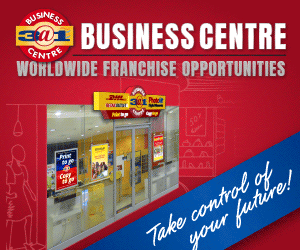A business needs to be known to people for it to offer its value. That is the simple reason why marketing exists. But just being known is just one of the many steps involved in turning a person who is simply a spectator of your business, into someone who champions your business. So how do we do it? How do you take someone from being an audience member to someone who is part of your business’ supportive community? We take a look at this pressing question below.
What is the difference between an audience and a community?
Your audience is a passive group of people who follow and are exposed to your brand and content; however, they don’t interact any further with it than that. Your community, on the other hand, is the group of followers that actively engage with your content by liking, commenting, and sharing it with their network. Your community listens and talks to you, connecting with your marketing efforts. So, the biggest difference between the two groups is their level of engagement.
How to turn your audience into your community:
Define your brand and what it stands for
Before building a community around your brand, you have to know what your brand stands for. Do you have a mission statement and story, and have you identified who your ideal community should be? Think of it like this: the colour orange does not try to make itself greener, hoping to appeal to everybody who loves both. Orange is orange, and you either like it or you don’t. There are no apologies or justifications. So, what’s your ‘orange’? What is it that your brand stands for that nobody else’s does?
Are you ready and armed to engage with this community with valuable content on a regular basis?
Who do you want to attract, and as importantly, who do you not want to include? Move on to the next step only after you’ve answered these questions.
Find the best way to talk to your community
After identifying what your brand stands for and who your target is, the next step is to answer the ‘where’ and the ‘how’.
This means selecting the right platform based on the following:
• Size of your audience.
• Your audience’s preferred method of engagement.
• The features that are needed.
• The level of your technical skills.
• Your budget.
In the beginning, think small and simple. A basic forum might be enough for your website, or even using Facebook groups if your users access it via mobile devices. Use these test forums to see how your community members interact. As their numbers and engagement grow, you’ll be better informed on choosing the right platform down the road.
Showcase your team
Marketing is about forging connections. When you showcase your team members, it humanises your brand. It shows your followers that you’re not just a logo – you’re a real group of individuals working hard to make your brand and product special.
Create a series that showcases each of your team members so that your social audience can learn who they are and what they do for the company. Highlighting your team will turn your brand from a faceless entity into one with many people behind it, all of which are relatable.
Showcasing your team is just one way to humanise your brand, but here are other things to keep in mind:
• Share a behind-the-scenes look at work and life at your company.
• Go on a jargon diet and use language that real everyday people use.
• Admit when you’re wrong and apologise when needed.
Get the community talking
Every community will go through a phase where conversations feel a little forced and people aren’t initiating conversations by themselves. This will pass. Keep building your community one person at a time, and it will eventually get momentum and flow naturally.
Don’t let the lack of engagement and feedback discourage you. If you have customers within the community, they are seeing your content and taking it in, they just need a little time to come out of their shell.
The key to this is to keep providing value. This brings us to our next point;
Give more than you get
Your community members need to get consistent value from you to remain a part of it. Invest whatever resources you have into creating a great community experience for your members.
Supply helpful resources. Answer questions. Offer whatever support you have to make your member happy. Your efforts will be returned in the form of engaged followers, future purchases, and even referrals.
Give it time
It takes a long time to build a community around your brand, but it creates an authentic, long-lasting connection between your brand and its customers. The best brands fill voids in their customers’ lives and become friends and trusted resources. Building a community of people takes time and a lot of effort. It is important to be patient – rush it, and your members will know.
It is easy to tell people about your products, but telling the right people about your products, communicating your purpose, and ensuring they receive a great experience and consistent value, will ensure that you are not the only one singing your praises.
 By Gugulethu Rajuili is founder and MD of Pull Incorporated.
By Gugulethu Rajuili is founder and MD of Pull Incorporated.










